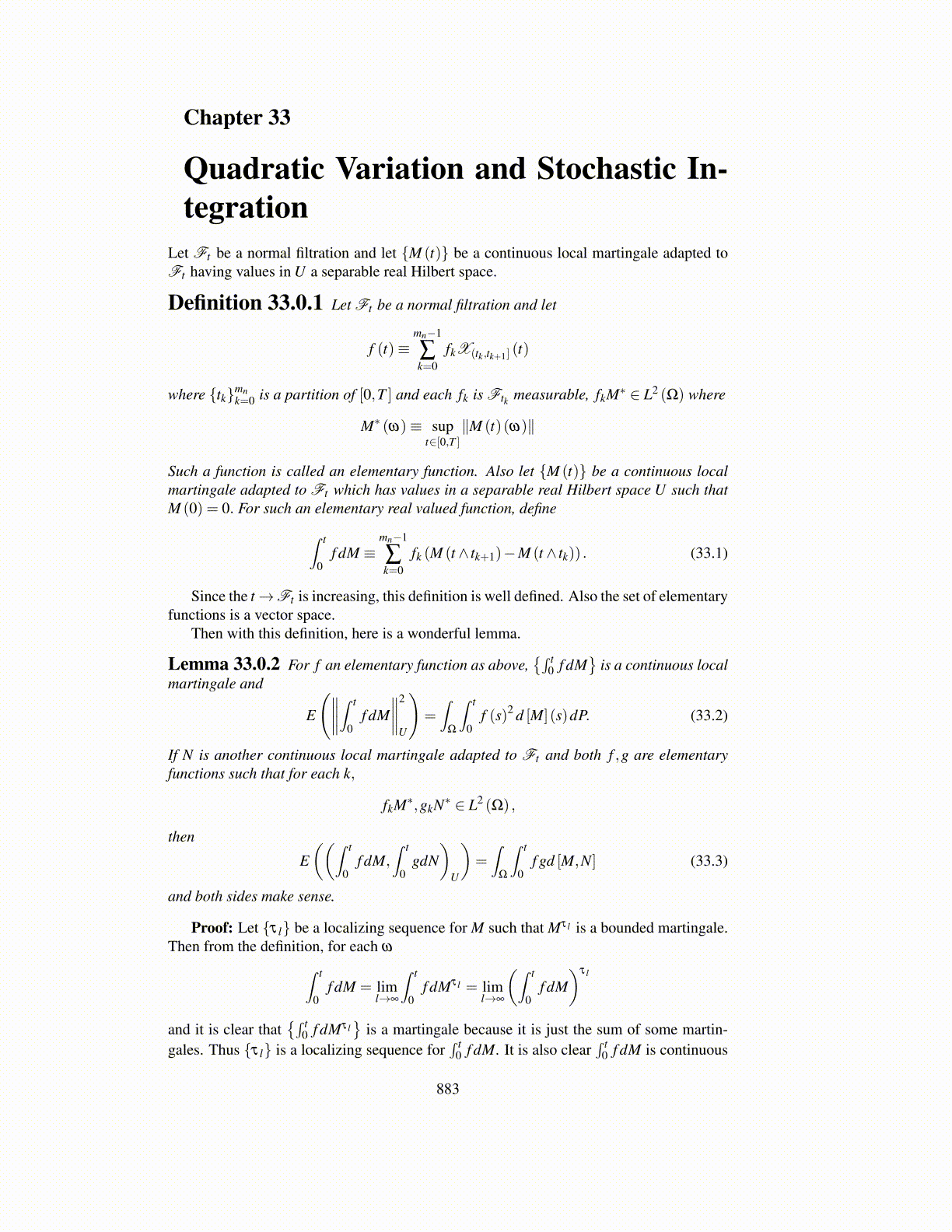
Chapter 33
Quadratic Variation and Stochastic In-tegration
Let Ft be a normal filtration and let {M (t)} be a continuous local martingale adapted toFt having values in U a separable real Hilbert space.
Definition 33.0.1 Let Ft be a normal filtration and let
f (t)≡mn−1
∑k=0
fkX(tk,tk+1] (t)
where {tk}mnk=0 is a partition of [0,T ] and each fk is Ftk measurable, fkM∗ ∈ L2 (Ω) where
M∗ (ω)≡ supt∈[0,T ]
∥M (t)(ω)∥
Such a function is called an elementary function. Also let {M (t)} be a continuous localmartingale adapted to Ft which has values in a separable real Hilbert space U such thatM (0) = 0. For such an elementary real valued function, define∫ t
0f dM ≡
mn−1
∑k=0
fk (M (t ∧ tk+1)−M (t ∧ tk)) . (33.1)
Since the t→Ft is increasing, this definition is well defined. Also the set of elementaryfunctions is a vector space.
Then with this definition, here is a wonderful lemma.
Lemma 33.0.2 For f an elementary function as above,{∫ t
0 f dM}
is a continuous localmartingale and
E
(∥∥∥∥∫ t
0f dM
∥∥∥∥2
U
)=∫
Ω
∫ t
0f (s)2 d [M] (s)dP. (33.2)
If N is another continuous local martingale adapted to Ft and both f ,g are elementaryfunctions such that for each k,
fkM∗,gkN∗ ∈ L2 (Ω) ,
then
E((∫ t
0f dM,
∫ t
0gdN
)U
)=∫
Ω
∫ t
0f gd [M,N] (33.3)
and both sides make sense.
Proof: Let {τ l} be a localizing sequence for M such that Mτ l is a bounded martingale.Then from the definition, for each ω∫ t
0f dM = lim
l→∞
∫ t
0f dMτ l = lim
l→∞
(∫ t
0f dM
)τ l
and it is clear that{∫ t
0 f dMτ l}
is a martingale because it is just the sum of some martin-gales. Thus {τ l} is a localizing sequence for
∫ t0 f dM. It is also clear
∫ t0 f dM is continuous
883